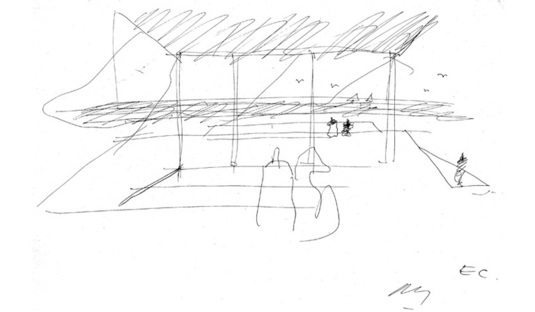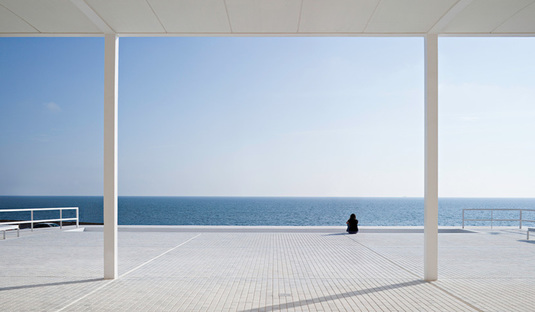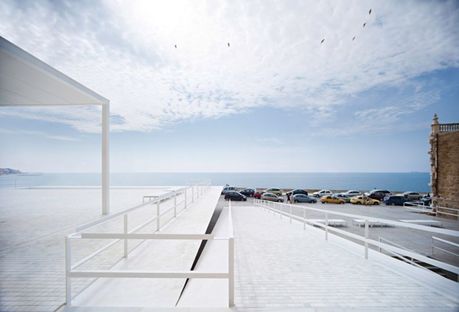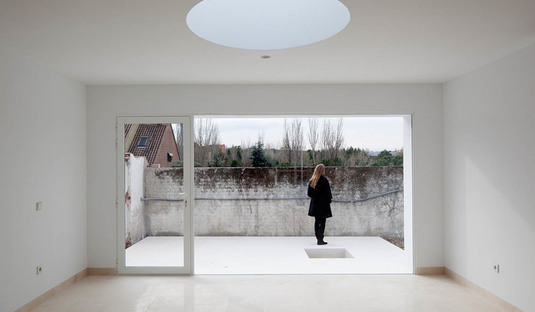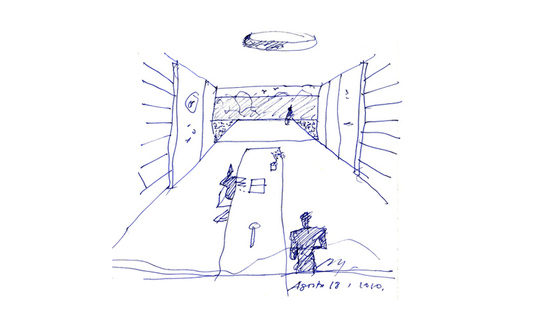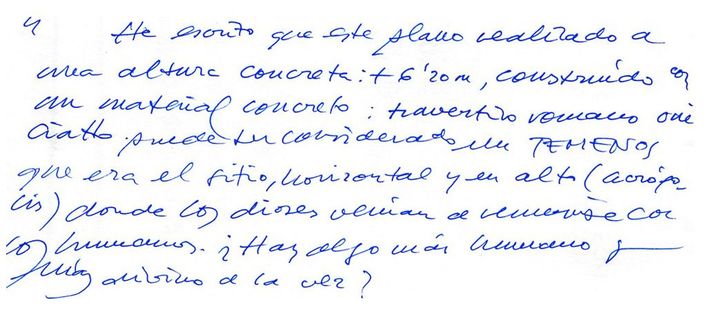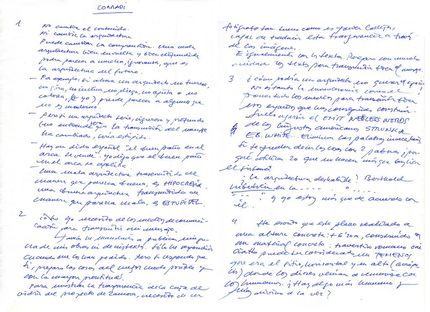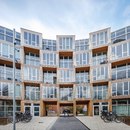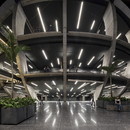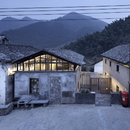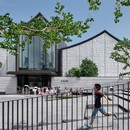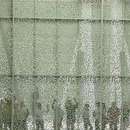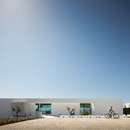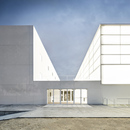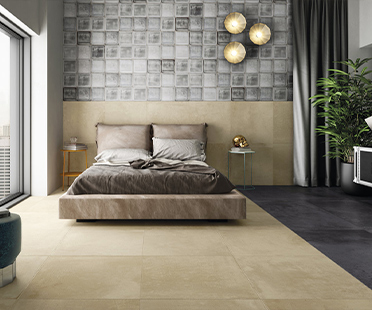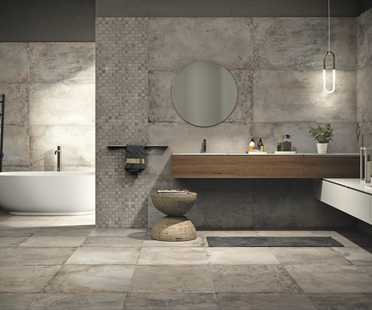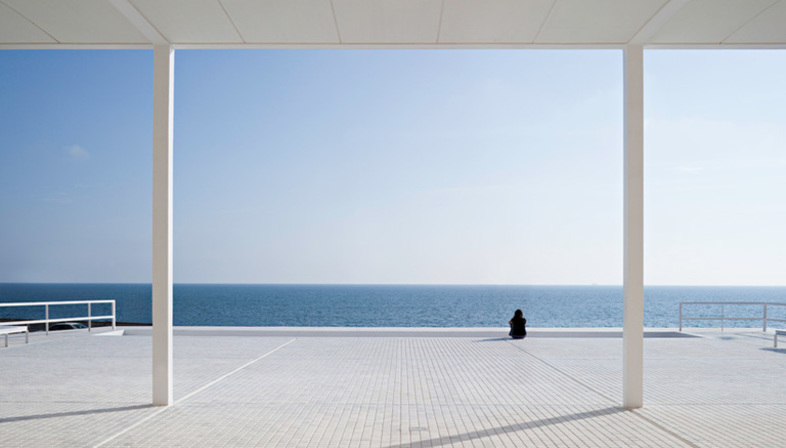
by Mara Corradi
How do you think the message of architecture is changing in relation to the means of communication through which it is expressed?
I believe we can consider ourselves lucky to live in this world, at this time. It’s a privilege to live in the third millennium.
Even our means of communication are great. But the message, the idea in itself, has not changed, just as architecture has not changed. The only difference is the medium we use to get the message out there.
Palladio got his messages across in engravings. We do the same through photographs and drawings. The new media make distribution so easy that we need to be prudent and filter things a bit.
Some rather superficial, frivolous architects like to use today’s media to make us think they represent “the new architecture”, as if they were an anchor for the salvation of humanity. But that’s not really the case.
Other architects of great talent and rigour don’t know how to use these new tools correctly, and don’t manage to communicate in the best possible way.
In Spain we have a proverb that goes something like this: you can tell if a yarn is good without having to pull out a thread. But today we might say that good yarn will get moth-eaten if you don’t pull it out!
Communicating about ’“mediocre architecture” and passing it off as “excellent” is pure hypocrisy. But it’s silly to communicate about “good architecture” ineffectively so that it seems “poor”.
We need not only to do things right, but to communicate about them right.
People who photograph, write about or make videos about architecture continue to translate it somehow, that is, to explain built space. How do you use means of communication to “interpret” your architecture?
I need means of communication to get my message across. I have never asked anyone to publish my work or my writings. I have submitted material only when asked to do so. If I say yes, I really work on it: I prepare the best possible material and submit it on time.
You have to be good at representing your projects through sketches, plans, models and photographs. To be able to illustrate the transparency of the glass box in the Zamora project, I asked for the assistance of a very good photographer, Javier Callejas, whose marvellous shots perfectly capture the idea.
The same thing happens with text: the words must clearly explain the project's intentions. When an architect produces architecture with reasoning behind it, he must be able to explain the reasoning clearly in writing.
One of your favourite concepts is that of space: you prefer the monochrome, as in Zamora or in the Andalusia Museum of Memory in Granada, and you let light in to describe it. What is the idea underlying this vision of undressed architecture, as you like to call it?
How can an architect not seek space, create it and build it to allow people to use it? This is something only architecture can do.
My preference for the monochrome is a matter of precision, of being drastic. I think that the best way of responding to Zamora Cathedral is to place a stone volume in front of it, made of the same stone as the Cathedral. And then a glass box inside it. This monochrome colour scheme contributes to the drastic nature of the building. I truly believe that architecture must be radical. Architecture has a powerful voice. In the Museum in Granada I decided that using white only would add to the spatial quality of the elliptical courtyard with the slide. And I think I got the result I wanted.
I agree about “undressed architecture”. Seeking perfection in architecture doesn’t mean getting neurotic. The Russian architect Melnikov put it well: “As I have become my own boss, I wanted to ask Architecture to finally take off her marble clothes, remove her make-up and show herself as she really is: naked, like a young, slender goddess. And to stop trying to look pleasing and condescending, as true beauty should”.
Melnikov’s words are perfectly clear. I fully agree with his firm intention of finding this radical beauty. This is why his words are posted up in my studio and guide my thinking about architecture. Years ago I translated them from Stephen Frederick Starr’s book “Melnikov. Solo Architect in a Mass Society”, which Cino Zucchi gave me in 1983, writing a dedication for me; the book is still on my desk. I still fully agree with this line of thought.
Far removed from all forms of minimalism, it is a matter of producing essential architecture, using only the necessary elements. “Omit needless words” as Strunk and E.B. White said in their little book about American linguistics.
In your work, and particularly your recent House of the Infinite, everything comes down to pure sign, and nothing can disturb architecture. How can you reconcile this philosophy with the imperfect, distracted human being who enters the spaces he has designed?
The House of Infinite is radically human. Is there anything more human than creating a tall platform where humans and gods can meet? This is what the Greeks called the “temenos”, which is exactly what the house represents.
This home is a temenos, where the gods can come down to talk to human beings.
Of course we humans, myself first of all, have plenty of defects, we are imperfect and distracted, as you quite rightly suggest. But we also have an outstanding ability to make something that goes beyond ourselves. And we even manage to find happiness in this creative process.
Architecture is the best job in the world.










